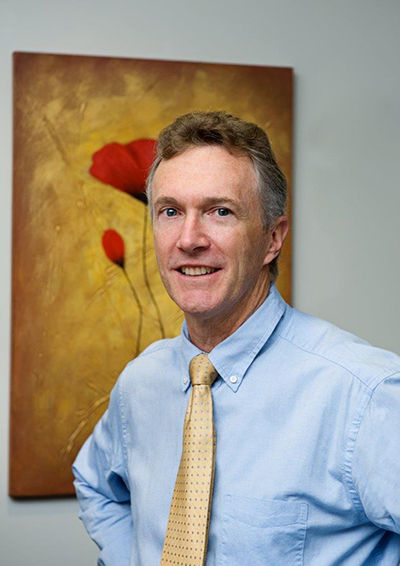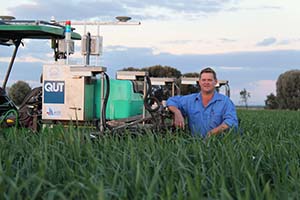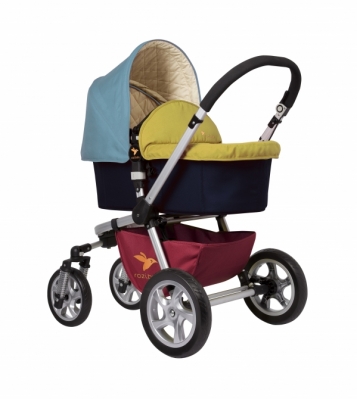Parkinson’s medical device breakthrough by e3k
ONE of the ‘quiet achievers’ of Australian engineering, e3k, has launched a medical device that is likely to bring its brand, which has been behind so many successful Australian-developed products, to the forefront.
Last year e3k commercialised its medical device, named Agilitas, which was wholly developed by e3k over five years. Agilitas is now on commercial sale through Bright Devices Pty Ltd, part of the Brisbane-based Gilmore Engineers Group that also created e3k in 2001. 
Agilitas is a ‘smart’ visual cueing device designed to assist people suffering primarily from ‘freeze of gait’ associated with Parkinson’s Disease. It is developing a worldwide market with first units delivered Australia-wide, as well as to Brazil and Boston, USA.
Like many products it has contributed to in the 12 years since Gilmore Engineers Pty Ltd adopted the brand name e3k, tag-lined ‘Engineering 3000 – new technologies for the new millennium’ it is expected to beome wildly successful.
For example, this year Atlantis Resources Limited – a company grown from the water power generation technology developed and tested in the Clarence River, NSW by e3k in the years 2000 to 2004 – will list on the London Stock Exchange. The world-patented technology, now part-owned by Morgan Stanley, relates to underwater tidal renewable power generation turbines.
In 2012, e3k was the recipient of four Engineering Excellence Awards from Engineers Australia.
E3k was a national winner, drawn from hundreds of entries Australia-wide, and contested by 42 division finalists in Canberra in November 2012, as well as taking three awards in the Newcastle Division, including the GHD Overall Winner, and the UGL Innovation in Sustainable Engineering Award for engineering design and testing of the SeaUrchin marine power generator.
This was obtained in collaboration with Elemental Energy Technologies Ltd, ATSA Defence Services Pty Ltd and RPC Technologies Pty Ltd.
In 2010, Gilmore Engineers received an Australian International Design Award from Good Design Australia, in the Business and Technology Category, for its contribution to the development of the FLAT hydraulic stabilising mechanism for use on any item with legs, skids or footings. The product is now available for sale through outlets worldwide.
In 2008, the mechanical fastening system known as ‘Joinlox’, to which e3k had contributed during development, won Invention of the Year on the ABC Television New Inventors program. It is now commercially available from Joinlox Pty Ltd, supported by Xstrata Technology, who signed a global licensing agreement in 2010.
In 2001, e3k received a High Commendation and was a finalist in 2010 in the Engineers Australia Queensland Division Engineering Excellence Awards, for projects sponsored by the Queensland Academy of Sport – which produced equipment used in winning a silver medal at the Sydney 2000 Olympics – and Leighton Contractors Pty Ltd for work on live measurement of the energy efficiency of mining haul trucks with an aim of reducing fuel consumption and emissions, respectively.
Director and president of e3k and Gilmore Engineers, Duncan Gilmore said the successes were a tribute to the diligence and innovation that e3k’s teams had applied over many years to these challenging projects.
“This list of commercial successes and awards is indicative of the level of attention received by all products which are subjected to development by e3k,” Dr Gilmore said.
ends
POSTED MAY 2014.

 How to resolve AdBlock issue?
How to resolve AdBlock issue? 

 THERE were ‘agbots’ around the Stamford Brisbane hotel on Tuesday. No, it was not a location shoot for a Transformers-like Hollywood blockbuster, but an Innovation Series event looking at how automation technologies like agriculture robots (agbots) will shape Australia’s agribusiness future.
THERE were ‘agbots’ around the Stamford Brisbane hotel on Tuesday. No, it was not a location shoot for a Transformers-like Hollywood blockbuster, but an Innovation Series event looking at how automation technologies like agriculture robots (agbots) will shape Australia’s agribusiness future. A PRAM designed by ‘two blokes’ has won the consumer-voted Australian Product of the Year Award for innovation.
A PRAM designed by ‘two blokes’ has won the consumer-voted Australian Product of the Year Award for innovation.  A WAVE power electricity generation project being established at Portland, Victoria, has won a $66.5 million grant from the Australian Renewable Energy Agency (ARENA).
A WAVE power electricity generation project being established at Portland, Victoria, has won a $66.5 million grant from the Australian Renewable Energy Agency (ARENA). 


